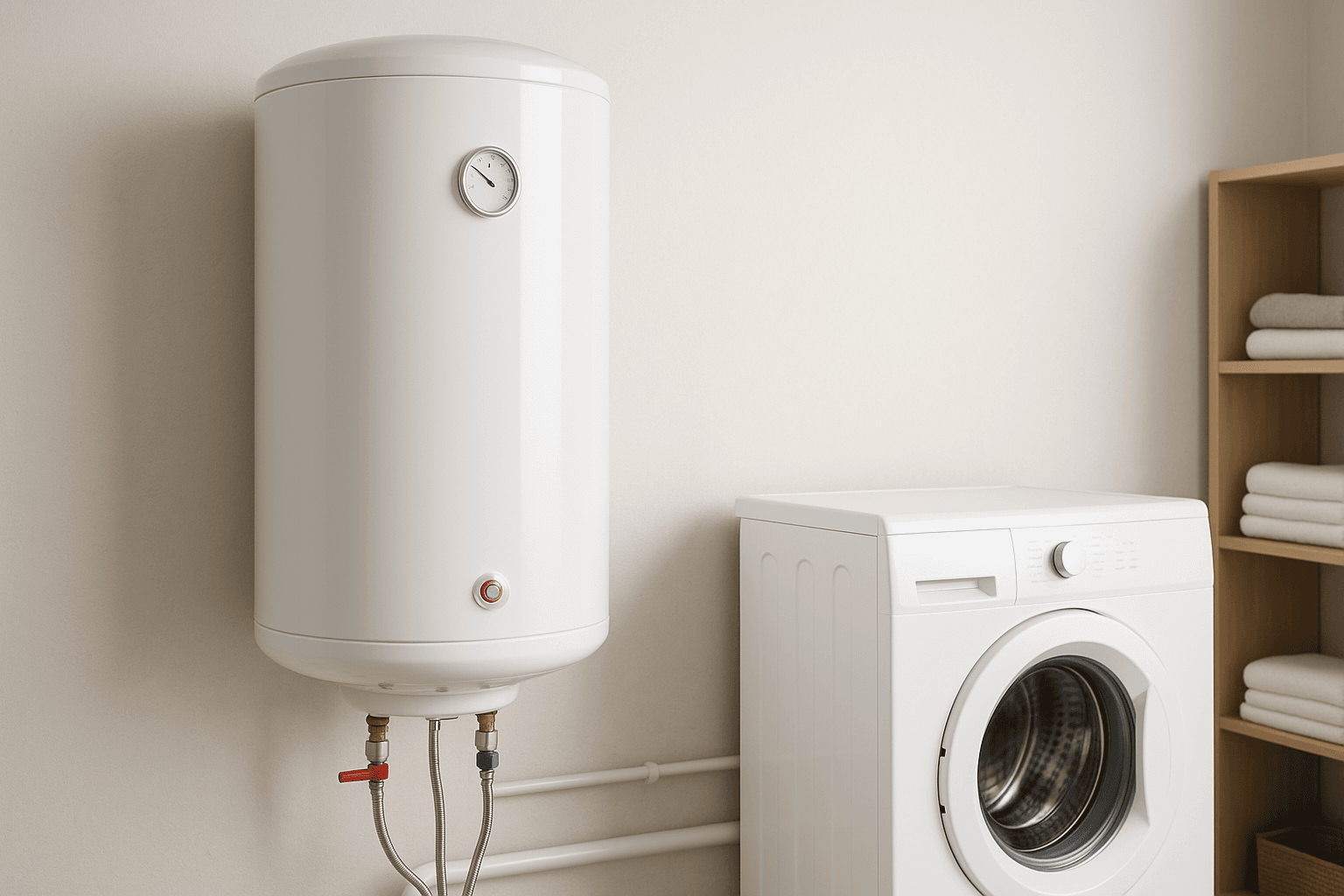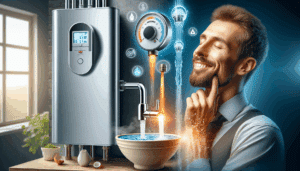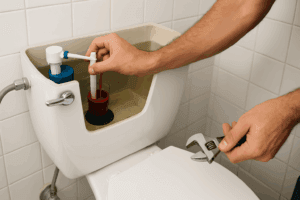Is there anything worse than stepping into the shower on a chilly morning, expecting a warm embrace of steam, only to be hit with a blast of ice-cold water? It’s the kind of rude awakening that ruins your day before the coffee even starts brewing. Honestly, most of us don’t give our water heaters a second thought until they quit on us, but understanding how this silent workhorse operates can save you a bundle of cash and a lot of cold showers.
The Great Debate: Tank vs. Tankless
If you’ve looked at water heaters lately, you’ve probably noticed there are two main camps: the traditional tank style and the sleeker tankless models. It can be a bit confusing trying to figure out which one fits your lifestyle, so let’s break it down.
The traditional tank water heater is what most of us grew up with. It’s that big metal cylinder sitting in your garage or utility closet, holding anywhere from 40 to 80 gallons of water, keeping it hot 24/7 just in case you need it.
- The Upside: They are generally cheaper upfront and easier to install if you’re just swapping out an old unit.
- The Downside: Once that hot water is gone, it’s gone. If you’re the last one to shower after a house full of guests, you’re out of luck until the tank recovers. Plus, you’re paying to heat water even when you aren’t home.
Then you have the tankless water heater, often called “on-demand.” These little guys don’t store water; they flash-heat it as it moves through the pipes. You turn on the tap, the burner ignites, and voila—hot water.
Here’s the thing about tankless units: they offer endless hot water. Theoretically, you could shower for three hours straight (though your water bill might hate you). They are incredibly energy-efficient because they aren’t heating a standby tank all day. However, the upfront cost is higher, and retrofitting your Gilbert home for one might require upgrading your gas line or electrical panel.
Size Matters (And So Does Recovery Rate)
A lot of homeowners make the mistake of just buying the same gallon size they had before. But families grow, teenagers start taking longer showers, and suddenly that 40-gallon tank just isn’t cutting it.
But it’s not just about gallons. You need to look at the First Hour Rating (FHR). This number tells you how much hot water the heater can deliver in a single hour, starting with a full tank. If your FHR is lower than your household’s peak demand—say, running the dishwasher, the washing machine, and a shower at 7 AM—you’re going to have a bad time.
You also want to look at the recovery rate. This is how fast the unit can reheat water after it’s been drained. Gas models usually have a faster recovery rate than electric ones. So, if you have a big family and an electric heater, you might need a larger tank to compensate for the slower reheating speed.
The Gilbert Factor: Hard Water is the Enemy
Living in Arizona, we have to talk about the elephant in the room: our water quality. You know that white, chalky crust that builds up on your faucets? That’s calcium and magnesium, and if it’s on your faucet, imagine what the inside of your water heater looks like.
Sediment buildup is the number one killer of water heaters in Gilbert.
As that sediment settles at the bottom of a tank, it creates a barrier between the burner and the water. This causes two problems:
- Your heater has to work harder to heat the water through that layer of muck, raising your energy bills.
- The bottom of the tank gets superheated, which can stress the metal and eventually cause leaks. You might even hear a popping or rumbling sound—that’s the sediment boiling. It sounds like popcorn popping inside your tank, which is never a good sign.
Maintenance: The Secret to Longevity
Most people think water heaters are “set it and forget it,” but a little TLC goes a long way. You don’t have to be a pro to handle the basics, though having a professional look it over once a year is smart.
Flush the Tank: Because of our hard water, you really should flush your tank heater once a year. This involves hooking a hose up to the drain valve and letting the water run out until it’s clear, removing that sediment we talked about.
Check the Anode Rod: This is a component most folks have never heard of, but it’s vital. It’s a long metal rod inserted into the tank, usually made of magnesium or aluminum. Its sole job is to rust. Seriously. It’s called a “sacrificial anode rod” because it attracts the corrosive elements in the water so they eat the rod instead of the steel lining of your tank.
Once that rod is eaten away, the water starts attacking the tank itself. Checking this rod every couple of years can double the life of your heater.
Repair or Replace? The 50% Rule
So, you’re standing in the garage looking at a puddle or listening to a weird noise. Do you fix it, or do you buy a new one? It’s a tough call.
Generally, we use the 50% Rule: If the cost of the repair is more than 50% of the cost of a new unit, you’re better off replacing it.
However, age is a major factor, too. Here is a quick cheat sheet to help you decide:
| Issue | Tank Age | Verdict |
|---|---|---|
| Pilot light won’t stay lit | Under 5 Years | Repair. Usually a thermocouple issue. |
| Leaking from the bottom | Any Age | Replace. The tank has likely failed. |
| Not enough hot water | 10+ Years | Replace. Efficiency has likely dropped. |
| Strange noises (Rumblings) | Under 7 Years | Repair/Flush. Likely sediment buildup. |
If your tank is over 10 to 12 years old, it’s living on borrowed time. Even if it’s working, it’s probably running inefficiently, and a new model could shave money off your monthly utility bill.
A Quick Note on Safety
We can’t write a guide without mentioning the T&P Valve (Temperature and Pressure Relief Valve). If you look at your heater, you’ll see a valve with a lever on top or on the side, usually with a pipe running down to the floor.
If the pressure or temperature inside the tank gets too high, this valve pops open to release steam and water so the tank doesn’t explode. Yeah, explode. It’s rare, but it happens. If you see this valve leaking, don’t plug it up! That’s a warning sign that something is wrong with the pressure, and you need to get it checked out immediately.
Why Energy Efficiency Matters Now More Than Ever
Let’s talk about the wallet for a second. Water heating is typically the second largest energy expense in your home, right after air conditioning. With energy costs creeping up, paying attention to the Uniform Energy Factor (UEF) rating on a new unit is crucial.
The higher the UEF, the more efficient the unit. While a high-efficiency model might cost a bit more at the register, the savings on your monthly gas or electric bill can pay for the difference in a couple of years. Plus, there are often rebates available for installing high-efficiency units, especially heat pump water heaters (hybrids), which pull heat from the surrounding air to warm the water. They work surprisingly well in our warm Arizona garages.
Don’t Let a Cold Shower Ruin Your Morning
Your water heater works hard for you every single day. Whether you’re dealing with a lukewarm shower, a scary rumbling noise, or you’re just ready to upgrade to a tankless system for that endless spa experience, you need a team that understands the specific plumbing challenges we face here in Gilbert.
We’ve seen it all—from sediment-filled tanks to blown thermocouples—and we know exactly how to get your hot water flowing again.



